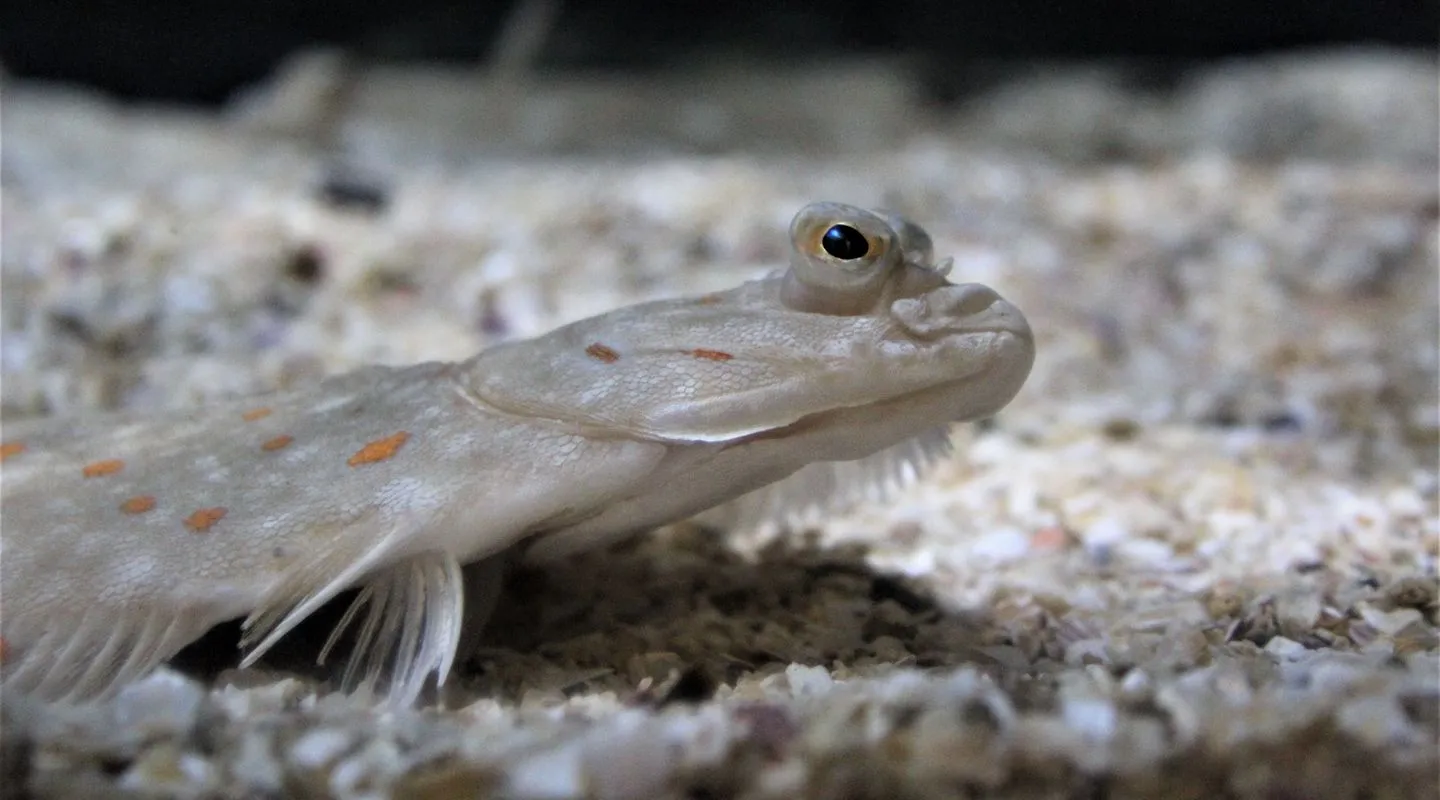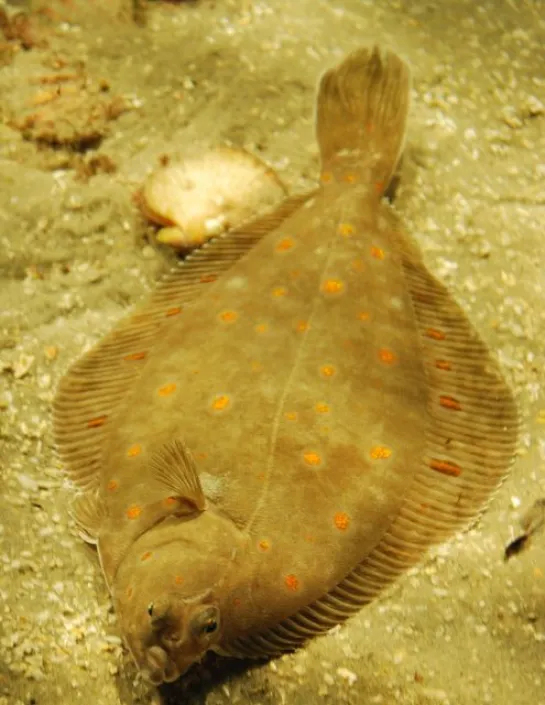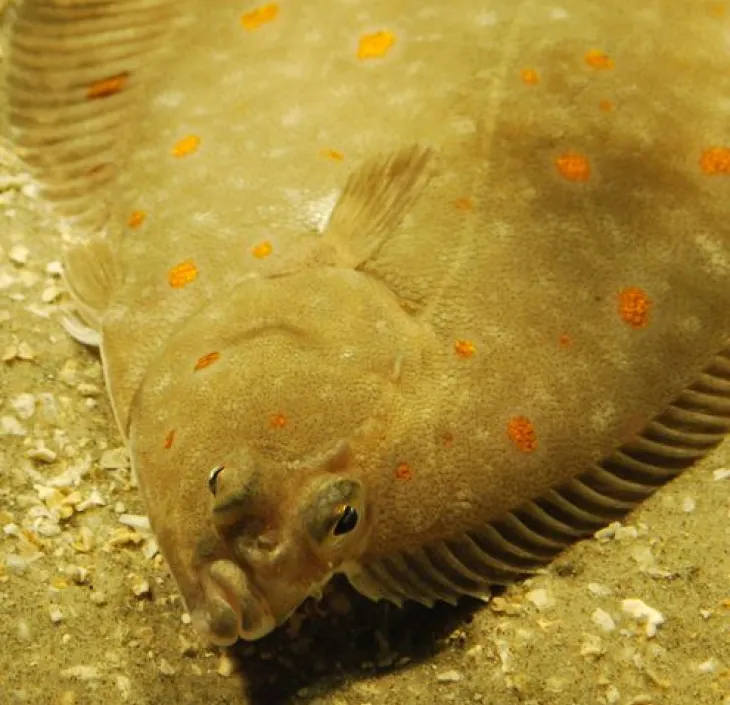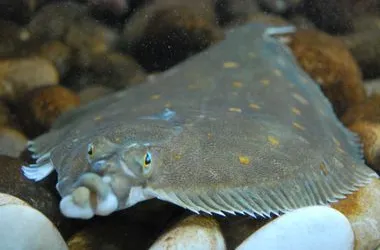A female can lay between 50,000 and 500,000 eggs.
While the larvae of European plaice feed mainly on plankton, adult plaice prefer bivalve molluscs and polychaetes. Larger individuals also eat small crabs, echinoderms and even fish.

Cold and temperate sea fish

Identity card
Not Evaluated
Waters of the north-east Atlantic, as well as in the Mediterranean, the Black Sea and the White Sea.
Benthic animal down to a depth of 120 metres.
European plaice measure between 25 and 45 cm on average but can grow to 95 cm.
Bivalve molluscs and polychaetes
50 years

Male plaice reach their sexual maturity between 2 and 6 years of age, (females betw. 3 and 7).
A female can lay between 50,000 and 500,000 eggs.
While the larvae of European plaice feed mainly on plankton, adult plaice prefer bivalve molluscs and polychaetes. Larger individuals also eat small crabs, echinoderms and even fish.
Plaice are benthic animals, i.e. they live close to the seabed, on sand, mud or gravel, typically down to a depth of 120 metres. Although it is regarded as being sedentary, it migrates seasonally following the tidal currents.
Waters of the north-east Atlantic, from northern Norway, as well as from Greenland (rare) as far as Morocco; also present in the Mediterranean, the Black Sea and the White Sea.
This flatfish is said to be "right-eyed"; this means that, as it lives on the seabed, its right side is the one that can be seen. Furthermore, its eyes and mouth are on the same side: the right side!
It has large orange spots on its dorsal side and lives mainly on sandy bottoms. Plaice measure between 25 and 45 cm on average but can grow to 95 cm.
Like all flatfish, European plaice, also known as simply plaice, is an easy prey for predators. Its advantage? Its camouflage system that enables it to blend in with the substrate (soil) on which it lives.
Mankind and shores

The Ocean Mag
In the spotlight
Poissons, crevettes, requins, les animaux qui se reproduisent ou sont élevés à Nausicaá rejoignent les espaces d'exposition.

Article
Savez-vous combien d’espèces de requins sont à découvrir à Nausicaá ? Apprenons-en plus sur ces animaux fascinants !
Article
Which came first, the egg or the fish? A brief overview of eggs and reproductive strategies in marine animals.